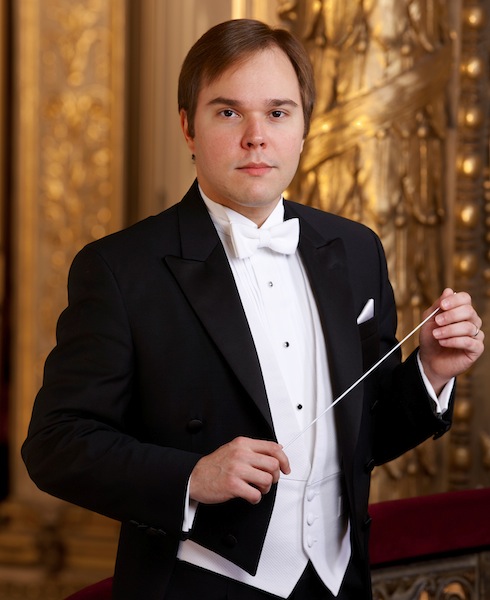Grand Rapids Symphony attracts a crowd to Carnegie Hall

Marcelo Lehninger conducted the Grand Rapids Symphony Friday night at Carnegie Hall.
“Spring For Music,” the short-lived Carnegie Hall series that brought in regional orchestras to showcase what they could do, is sorely missed. It was exciting to see all those different American ensembles, and since they aimed to impress on the big stage, they brought in a lot of music that would not otherwise be heard.
A refraction of that experience returned to Carnegie Friday night in the form of an appearance by the Grand Rapids Symphony. The event didn’t have the style or the adventurous spirit of “Spring for Music,” though. The orchestra drew a sizable audience of New Yorkers to join a contingent of hometown supporters, several hundred of whom had made the trip from Grand Rapids. But despite playing the big house, the unambitious programming seemed pitched at a very regional level.
Led by music director Marcelo Lehninger with pianist Nelson Freire as soloist, and the Grand Rapids Symphony Chorus in tow, the orchestra brought in an odd program.
The music—Bolero, piano concertos from Villa—Lobos and de Falla, and Villa-Lobos’ Choros No. 10—did not play to the orchestra’s strengths. Another way to put it is that the music demanded an orchestra with a different character than this one.
The Grand Rapids group has a polished sound, and played with steady rhythm. One was impressed by the precision of intonation across the string section, and the overall energy level. The chorus, which appeared for the concluding Choros, sang with passion.
Regional orchestras like this don’t have the sonic heft of the major international ensembles; that’s the case no matter who they are. That meant there were stretches in the concert where the violins were lost under the rest of the orchestra. Even Freire’s brilliant touch at the piano at times drowned them out.
That lack of mass was acute in the opening Bolero. The orchestra played with a true pianissimo in the opening statement, but they didn’t have the force to carry Ravel’s long crescendo through to the coda, plateauing before the key change. The expression, until the very end, was unexpectedly contained.
The main incongruity was color. This was a program of colorful pieces, not just in the clichéd national sense, but that the composers orchestrated their music precisely to use a rainbow of colors as part of the aesthetic experience. The Grand Rapids Symphony had a good sound, but not the right sound They ranged a spectrum from gray to silver—not small, but with a specific and contained set of hues.
One imagined how they would sound in granitic pieces, like the symphonies of the mid-20th century modernist American composers. Maybe next time.
Instead Freire, playing one of the most monochromatic instruments, was the most vivd presence on stage. This veteran musician had the right touch and sense of quickness for the concertos. He brought entertainment to Villa-Lobos’s scattered Momoprecoce, and sparked de Falla’s Nights in The Gardens of Spain.
His attention to phrasing delivered genuine atmosphere in those two pieces; the orchestra didn’t, unfortunately, which hampered the overall effect. However, their playing in the Mahlerian final bars of Nights was one of their finest moments of the night.
Their other was the entire performance of the Choros. Lehninger didn’t seem to have a handle on this fascinating, ungainly beast, it came off almost as episodic as Momoprecoce though it is a more centered composition. But orchestra and chorus made exuberant music, and if the rhythms didn’t really swing, they had an exactitude that showed a commitment to the performance.



Posted Apr 21, 2018 at 9:20 pm by Andrew
I’ve scarcely come across a phrase as loaded as “sonic heft.”